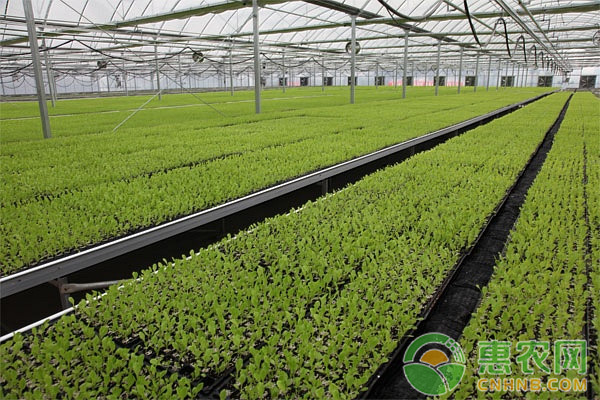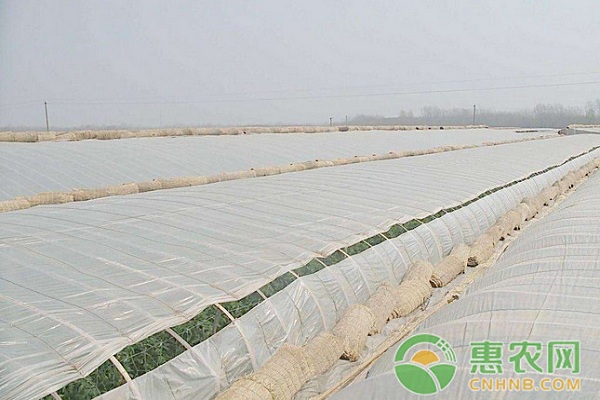Everyone knows that the current environment is much worse than before. How can shed vegetables be managed in bad weather such as yin, rain, snow and haze? Recently, some areas coincided with heavy fog and haze, which seriously affected the production management of greenhouse vegetables. Some vegetables and farmers were not good enough to cause great losses. It is imperative to pay attention to the production management of greenhouse vegetables in smog weather. The haze weather has a great influence on the vegetables in the greenhouse protection, which will result in short illumination time, which is not conducive to photosynthesis, affecting the normal growth of vegetables, the yield will decline, the quality will be worse, and the pests and diseases will be intensified. First, timely exposure to increase lighting Generally, as long as it is not snow, rain or fog, it is necessary to uncover the curtain. However, when the temperature is low, it is necessary to open the curtain at night and cover the curtain early; when the temperature is high, the curtain is exposed early and the curtain is covered at night to prevent the long-term boring curtain from causing low temperature, high humidity and low light environment, and it is easy to induce various diseases. . In case of rainy days and snowy days, when the temperature in the greenhouse is not lower than the required temperature, the straw curtains should be uncovered to expose the plants, but if the temperature is lower than the required temperature, cover the straw curtains and stop the snow in time. Clean up the snow and increase the light. In addition, after the weather suddenly turns fine, it is best not to uncover all the straw curtains to prevent the thin plants that have passed the rainy weather suddenly seeing light, and the temperature in the shed suddenly increases, causing the water evaporation of the plants to increase, causing temporary wilting of the plants. Put down some of the straw shades and cool down. After the plants resume growth, they are all uncovered. After repeated 2 or 3 times, the plants can be guaranteed to grow normally. Second, the low temperature as much as possible to control fertilizer and water control Winter temperature plays a key role in the growth of greenhouse vegetables. When the bottom fertilizer is sufficient and the bottom is good, less watering and less topdressing are needed to maintain the ground temperature and temperature, reduce the air humidity, not root, not damage the roots, and promote The normal growth and development of vegetables. In the low temperature and low temperature weather, the watering should be strictly controlled, the watering should be less or not, and the watering interval should be properly elongated. It should be watered or drip irrigation. The first two days after watering, it is easy to cause the humidity in the shed to increase, and should pay attention to reasonable ventilation and temperature reduction to prevent disease. The shed is covered with mulch to reduce the evaporation of soil moisture. Ventilation is generally preferred when the temperature is high at noon. When it is not ventilated, it can be naturally hygroscopic, and it can be used to absorb water vapor or mist by using straw, wheat straw, quicklime and other materials to achieve the purpose of reducing humidity. Third, timely picking and thinning flowers and fruit In the winter, when there are bad weather such as yin, rain and snow, the ground temperature is low and the light is weak. The organic nutrients produced by the plants are less, which is not conducive to the absorption of nutrients by the roots. The melons and solanaceous vegetables must be harvested in time. Excessive flower and small fruit are removed, and the excessive consumption of nutrients by the plants is reduced to promote the normal growth of roots and plants. Fourth, add film to do antifreeze work The front part of the greenhouse is most prone to freezing damage, and it is important to do a good job in antifreeze work. Adding a layer of 1m high mulch film or film on the front edge can not only keep warm, but also prevent the front edge from dripping and reduce the occurrence of diseases. For short vegetables, timely cover small arch sheds, such as spinach, rapeseed, cauliflower, cabbage, etc., can be covered with a layer of plastic small arch shed on the vegetable raft to play the role of warming and heat preservation. V. Reasonable disease prevention The continuous cloudy day is relatively small, and the humidity in the greenhouse is large, which creates favorable conditions for the occurrence of diseases. Once the signs of the disease are found, it is necessary to dehumidify and eliminate the insects in time. Precautions should be taken in advance, such as protective bactericides such as daisen zinc, mancozeb, chlorothalonil, carbendazim, thiophanate-methyl; After the good day, you can take a therapeutic fungicide. When you are not sure which diseases will occur, use the agents that treat low-grade fungi, such as cyanosin, dimethomorph, cymoxanil, and dipropionamide. In addition, agents for treating higher fungi such as difenoconazole, prochloraz, tebuconazole, hexaconazole and the like. note: 1. Higher fungi include diseases on leaves other than bacteria and viral diseases, such as anthrax, white powder, leaf blight, and dark spots. 2, low fungi are: root diseases (such as root rot), downy mildew, disease. The above is the management measures for vegetable greenhouses under smog weather. It is time for the farmers to take corresponding measures! Urostomy Bag,Ileal Conduit Bag,Urostomy Bag Covers,Urine Ostomy Bag Wenzhou Celecare Medical Instruments Co.,Ltd , https://www.celecaremed.com
